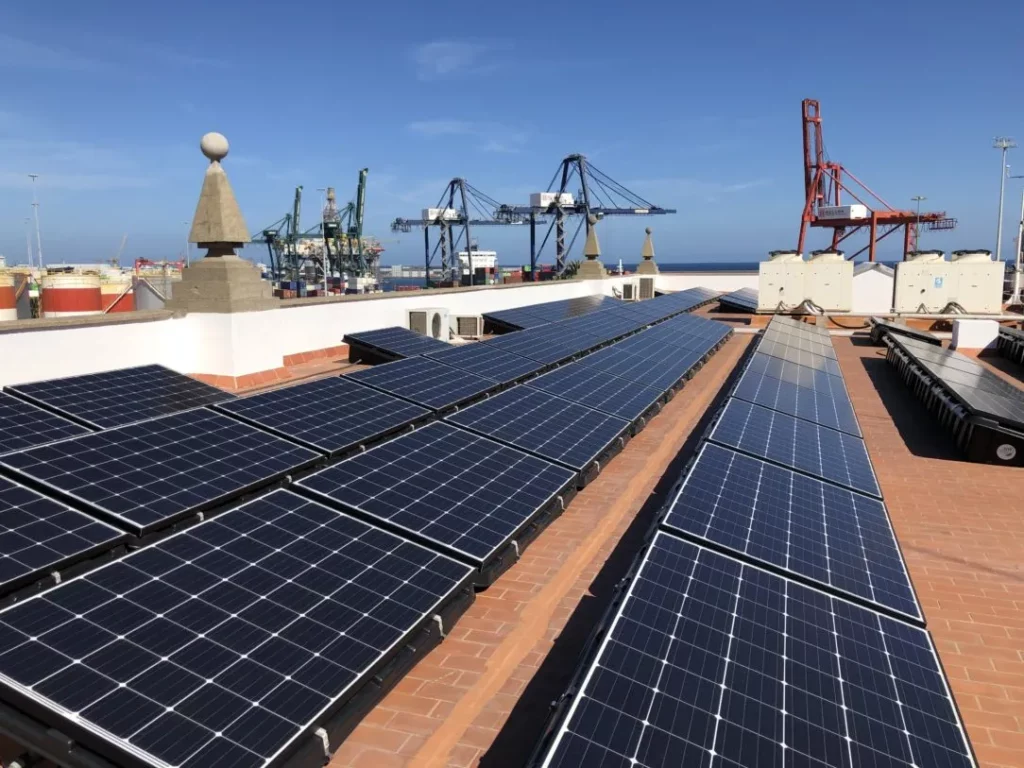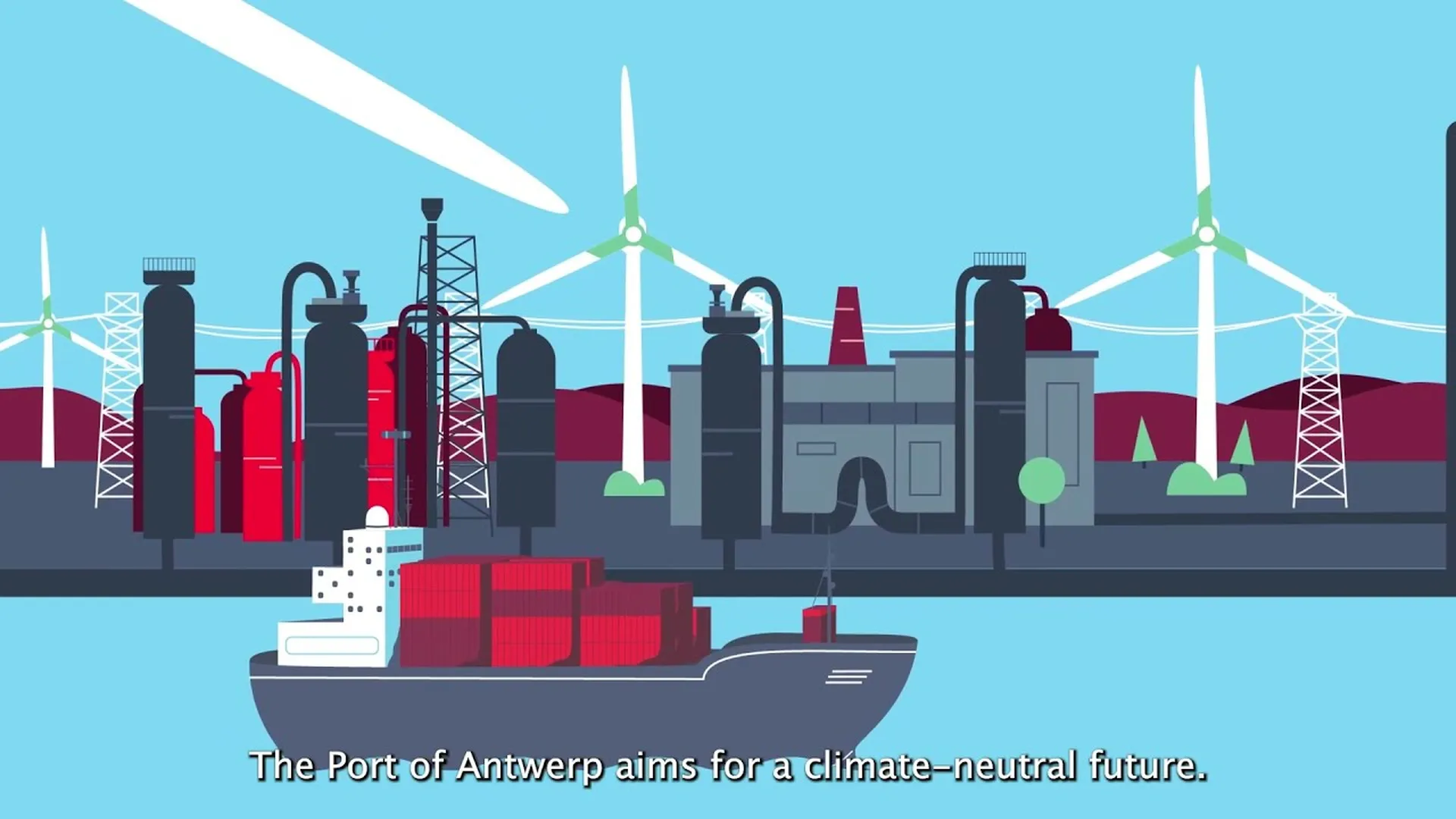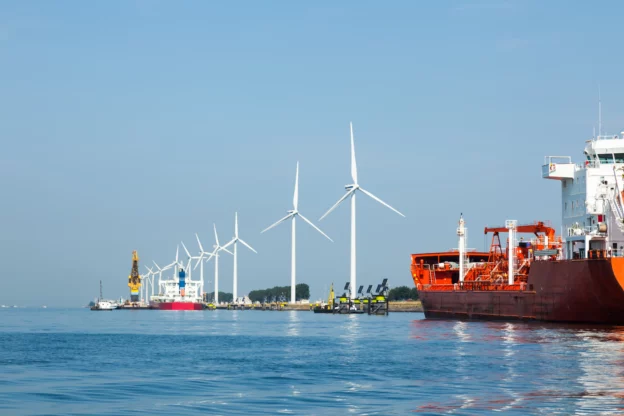Introduction
Port activity has acquired increasing relevance in recent years, being fundamental for the growth of foreign trade and the development of nations. However, the future of this sector will depend on its prompt adaptation to new demands, highlighting the need for modern infrastructures that have greater capacity, environmental focus, integration with local communities and urban-social harmony. In summary, sustainability in port facilities is the ticket to sustainable development of the maritime industry.
A key challenge for ports in improving standards lies in ensuring operational sustainability. In the midst of the economic, environmental and social variations that may occur today, port facilities must reorient strategies towards more sustainable, viable and competitive developments. Representing close to 90% of international trade, the shipping sector faces the challenge of guaranteeing sustainability and efficient logistics in a scenario of growing demand, while avoiding as many environmental consequences as possible.
Sustainability in the marine sector
This concept emerges as a structural pillar in the balance of the economic, social and environmental development of humanity. Central to the global economy and trade, the maritime industry plays a crucial role in ensuring a healthier world. For this reason, governments, companies and organizations have sought to build an equitable and prosperous future, addressing challenges through plans that reduce greenhouse gas emissions, promote sustainable mobility, use renewable energy, protect marine biodiversity and promote circular economy.
Ports play a key role in maritime sustainability, which is why it is necessary to develop more sustainable precincts, efficient supply chain management and the adoption of practices that include waste management, clean transportation and conservation of coastal habitat.
Maritime well-being is UN Goal 14 , which highlights the need to conserve the oceans and address ocean pollution and acidification under immediate action. On the other hand, it is essential to address climate change in this sector, due to variations in sea level, waves and storms, which can affect the infrastructural resilience of port facilities.
What are sustainable port facilities?
They are maritime infrastructures designed and managed with a comprehensive approach, where the environmental, social and economic impact is carefully considered. These facilities operate in accordance with the policies and regulations established by international organizations that ensure marine integrity, such as the International Maritime Organization (IMO) and the European Green Deal (EGD) 1 .
Among the fundamental components of sustainable port facilities is the implementation of specific measures, such as the significant reduction of greenhouse gas emissions, the improvement of air quality, the adoption of high-quality fuels with low emission rates , and the continuous supervision and application of sectoral guidelines. These sustainable ports are not only crucial nodes in the global shipping network, but also serve as models to drive positive improvements in the industry as a whole.
Ways to improve sustainability in port facilities
Waste management in port facilities
Proper waste handling in ports, in addition to contributing to maintaining a clean environment, also represents a key opportunity to harness the potential of controlled ecosystems, as sources of renewable energy. This practice goes beyond simple environmental cleanliness, becoming a strategic factor to minimize the environmental footprint and promote efficiency in the use of resources.
The development and application of a waste management plan represents a fundamental step in guaranteeing sustainability in ports, highlighting its application at a national, regional or local scale. These plans play a significant role in sustainable waste management, providing a comprehensive view of the waste generated, and outlining specific treatment strategies.
Efficient waste management planning not only addresses the current situation, but also establishes applicable objectives and measures to minimize environmental impact. This technical and strategic approach has become a considerable element in the planning efforts of various countries, underlining the importance of effective waste management to move towards sustainability in port facilities.
Measurement and monitoring of sustainability indicators
These indicators offer much more than a report, they enable an objective evaluation of port management in all its dimensions: economic, social, environmental and institutional 2 . By addressing these four facets, Port Authorities can effectively monitor and evaluate the impact of implemented programs, as well as adjust strategies as necessary.
The use of indicators not only facilitates benchmarking between ports, identifying best practices and comparing performance against the industry, but also becomes a key element in the competitive market. This approach, widely applied in a port system, allows precise benchmarking of the optimization of sustainability in port facilities, promoting higher standards and greater competitiveness at an international level.
Clean technologies in port facilities

The implementation of clean technologies in port facilities is an essential component to enhance sustainability and environmental efficiency in port development. The adoption of new work models, such as automation and low-emission land-based equipment , is presented as a key strategy to reduce ship emissions and improve port operational efficiency.
Additionally, as a way to promote biodiversity, the importance of investing in low-impact technologies on surrounding habitats is emphasized, such as the creation of corridors for fauna and the implementation of artificial wetlands. The use of clean technologies in port facilities allows them to develop in a balanced way, ensuring development that not only benefits the sector, but also protects and favors the environmental environment and local communities 3 .
Considerations to take into account
Financial sustainability
Stability over the port optimization term is an essential requirement to ensure continuous improvements in port operations. For this reason, it is essential to know the costs involved in this process, which can be achieved through a detailed analysis of the costs associated with the development, maintenance and operation of the port 3 . Financial sustainability also involves strategic consideration of potential economic benefits derived from port operations over time.
Obtaining grants and financing is presented as a crucial consideration to ensure the economic viability of projects. These financing sources can vary, ranging from government support, investments and public-private partnerships. For this type of financing, adequate management is necessary, including returns and possible long-term impacts.
Normative compliance
In the field of port optimization projects, compliance with rules and regulations is an unavoidable requirement. These regulations, subject to variations depending on geographic location, impose relevant criteria on issues of energy efficiency, sustainable transportation, and asset and waste management; Therefore, port managers must ensure compliance within the facilities. Additionally, to verify compliance with these standards, the preparation of detailed technical documents and the presentation of reports will be necessary as evidence of the project’s adequacy to the requirements demanded in national and international locations 3 .
Regulatory compliance functions as a means of safeguarding the legality of port operations, it also contributes to establishing facilities that respect international sustainability standards in port facilities, covering fundamental aspects of environmental management. This meticulous approach not only strengthens the legitimacy of the project, but also positions the ports as examples of global standards compliance.
Changes in logistics
Because environmental awareness drives significant changes, port facilities are in a transition process to achieve sustainability. However, the resistance to change of some ports makes it difficult to implement ecological initiatives despite being necessary 4 . A clear example of changes generated in logistics is the adoption of digital transformation as an improvement tool, especially for carbon and energy management systems.
The implementation of new work models not only drives sustainability, but also generates significant savings. By adopting concepts that ensure sustainability in port facilities, the carbon footprint can be reduced and energy efficiency improved, creating the path to a more profitable future.
Cases of optimization of sustainability in port facilities
Port of Antwerp

Port of Antwerp’s approach towards a sustainable future. Video courtesy of
Port of Antwerp-Bruges .
The Port of Antwerp is one of the exponents of port sustainability through its innovative practices. With a focus on the energy transition process, the port strives to efficiently reduce energy and raw material needs through the reuse of industry waste streams, such as heat and CO₂.
Standing out as the epicenter of the largest chemical cluster in Europe, the Port of Antwerp seeks to harness industrial waste heat for additional applications, and in this way, continue promoting sustainable transportation 5 .
This circular approach is carried out in collaboration with various organizational bodies, within the framework of the project known as Antwerp-North Heat Network. In addition, the port implements solutions for maritime navigation, such as shore-based power supply, reducing emissions and improving air quality.
Felixstowe Harbor
In its commitment to promoting sustainability in port facilities, this port actively seeks measures to increase the level of reduction of atmospheric emissions and also develop projects to preserve the animal environment in its surroundings. To achieve this, periodic monitoring of pollutants such as particles and nitrogen dioxide is carried out, identifying and applying the necessary mitigation measures 6 .
In addition, the terminal is distinguished by its consideration of biodiversity, having ornithological specialists to manage the population of peregrine falcons that have made the port their home since 2012. To do this, they have installed nesting platforms and the activity of peregrine falcons is closely monitored to minimize the influence on their nesting period and preserve local biodiversity.
Port Maasvlakte II
The Port of Maasvlakte II stands out as a benchmark in the use of clean technologies in port facilities, since through automation it has managed to achieve the development of operations without CO₂ emissions 7 . This approach has led to the development and implementation of energy-efficient and environmentally friendly buildings and equipment.
Among the clean technologies used at the port are dock cranes that regenerate energy, electric cars that are driven by staff, and automatically guided vehicles that run on electricity. These vehicles transport containers for eight hours on a single battery, and once discharged, it is changed at stations that use batteries generated from green wind energy. This operating model not only optimizes sustainability, but also minimizes noise pollution in the terminal.
Conclusion
Optimizing sustainability in port facilities represents the advancement of the maritime industry. As ports face increasing demands, the development of modern infrastructure with expanded capacity, environmental focus and harmonization with local communities and fauna comprises one of the most promising solutions to this challenge. The reason for this is that the adoption of a sustainable model can allow the satisfaction of current needs, without generating negative impacts on the sea.
Efficient waste management, accurate measurement of sustainability indicators and the adoption of clean technologies are crucial steps to achieve comprehensive sustainability. Currently, there are ports that practice these principles, highlighting the viability and benefits of this transformation, demonstrating that sustainability in port facilities is not only necessary, but also profitable and exemplary for the industry and the world.
References
- Munroe, A. (2022, March 2). Sustainable shipping ports: how + why it’s important[2022 overview] . Retrieved January 27, 2024, from https://www.container-xchange.com/blog/sustainable-ports/
- ECLAC. (2011). Sustainable port policies. Consulted on January 27, 2024, from https://www.cepal.org/sites/default/files/publication/files/36086/FAL-299-WEB_es.pdf
- Identec Solutions. (2023, April 17). PORTS DEVELOPMENT WITH SUSTAINABILITY IN MIND. Retrieved January 28, 2024, from https://www.identecsolutions.com/news/ports-development-with-sustainability-in-mind
- Naucher Global. (2023, July 3). Sustainability in the maritime sector: The future is at stake. Retrieved January 29, 2024, from https://www.naucher.com/wp-content/uploads/2023/07/Especial-Sostenibilidad_0623.pdf
- Port of Antwerp Bruges. (sf). Climate and energy transition. Retrieved January 29, 2024, from https://www.portofantwerpbruges.com/en/our-port/climate-and-energy-transition
- Hutchison Ports. (2022). Building resilience through sustainable development: Sustainability report 2022. Retrieved January 29, 2024, from https://hutchisonports.com/sustainability/HutchisonPorts_SR2022.pdf
- APM Terminals. (sf). OurTerminal . Retrieved January 29, 2024, from https://www.apmterminals.com/en/maasvlakte/about/our-terminal

